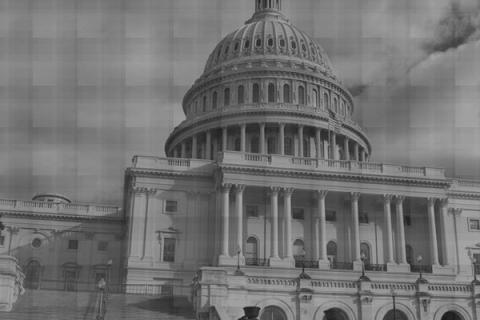While the U.S. economy continued to grow during the first quarter of 2012 (+2.2 percent on an annual basis), it grew at a reduced rate from the previous quarter (+3 percent), and slightly below expectations. Is this a worrisome trend or just a glitch on the path to full recovery?
The answer is clearly a little of both, although in a surprising way. The private sector economy appears to have done quite well, according to economist Mark Perry of the University of Michigan:
“Perhaps today's GDP report is actually better than what is being reported, as the private sector of the U.S. economy grows at a rate slightly above the historical average, and twice the average rate since 2000.”
The drag on economic growth is the public sector, where spending has dropped sharply over the last few quarters. Reduced government expenditures sapped around .6 percent from this quarter’s GDP, according to Daniel Gross, author and economics editor at Yahoo! Finance.
New York Times columnist Paul Krugman decries government austerity measures at a time of marginal economic recovery, and cautions that austerity by the U.K. has thrown that nation into a double-dip recession.
“Critics warned from the beginning that austerity in the face of depression would only make that depression worse. But the ‘austerians’ insisted that the reverse would happen. Why? Confidence! Or as I put it way back when, the idea was that the confidence fairy would come in and reward policy makers for their fiscal virtue.”
In its news coverage, The Times called the U.S. economic recovery “lumbering,” but noted that “it has not followed the euro zone, where growth halted in the fourth quarter and where the first quarter is expected to show a contraction.”
The report also stated that “one of the unexpected upsides to the economy in the first quarter has been strong corporate earnings. With 254 of the 500 companies in the Standard & Poor’s 500-stock index reporting through Thursday, more than 72 percent posted profit that exceeded forecasts, according to Thomson Reuters data.”
Meanwhile, Brad Plumer of the Washington Post warns in Wonkblog against taking these first pass numbers too seriously:
“Advance estimates of GDP growth are very frequently incorrect. Over the last eleven years, the GDP numbers have gotten revised by about 0.54 percent by the third pass. And when all of the numbers since 2007 were redone in July 2011, the corrections got even bigger.”
Plumer notes that the numbers might go up or down, so “the U.S. economy might be chugging along at a faster pace than today’s numbers suggest. Or it might be doing much worse. A big downward revision from today’s 2.2 percent — something that happened in 2011 — would mean the economy is in an extremely weak spot.”
Whatever the final results for the quarter, Paul Krugman wants to put the “confidence fairy” to rest once and for all, and rejects a move toward austerity in government spending:
“But while the confidence fairy appears to be well and truly buried, deficit scare stories remain popular. Indeed, defenders of British policies dismiss any call for a rethinking of these policies, despite their evident failure to deliver, on the grounds that any relaxation of austerity would cause borrowing costs to soar.”
Krugman believes that the current environment has proven the worth and reliability of Keynesian economic theory under which government spending stimulates a moribund economy and energizes GDP growth.

